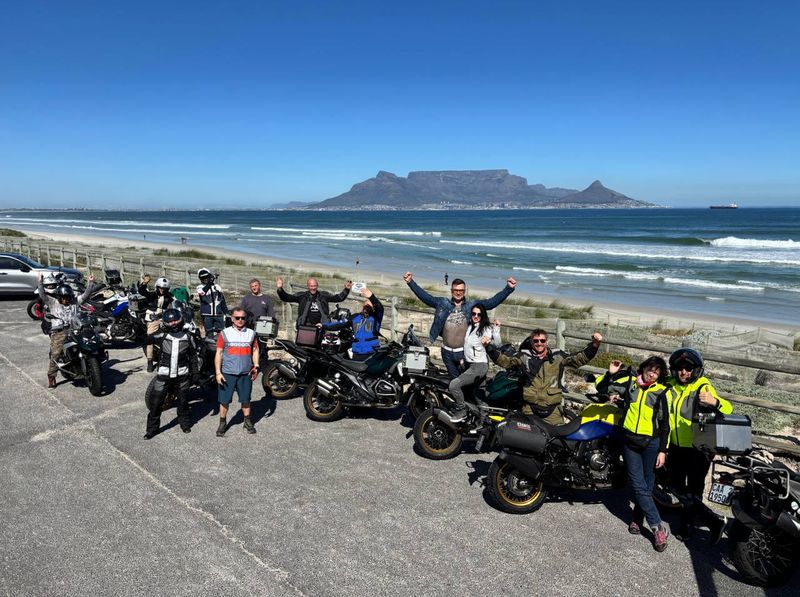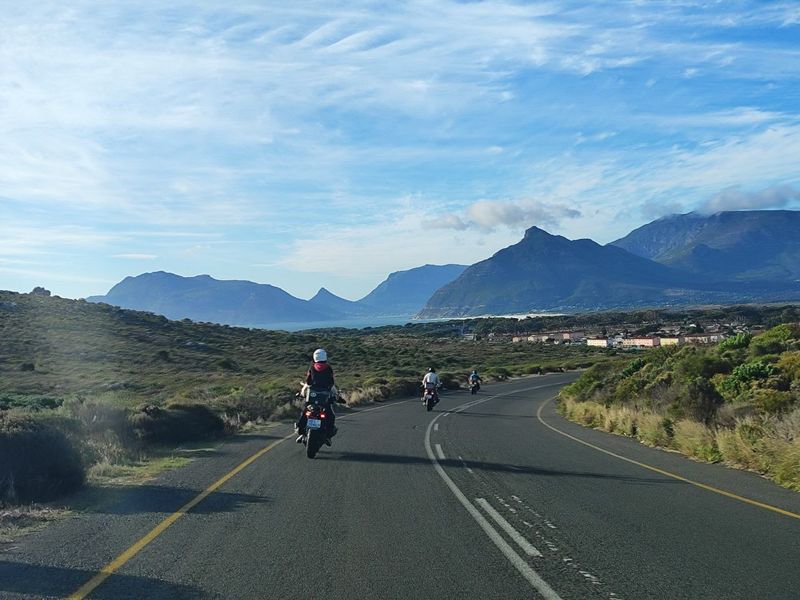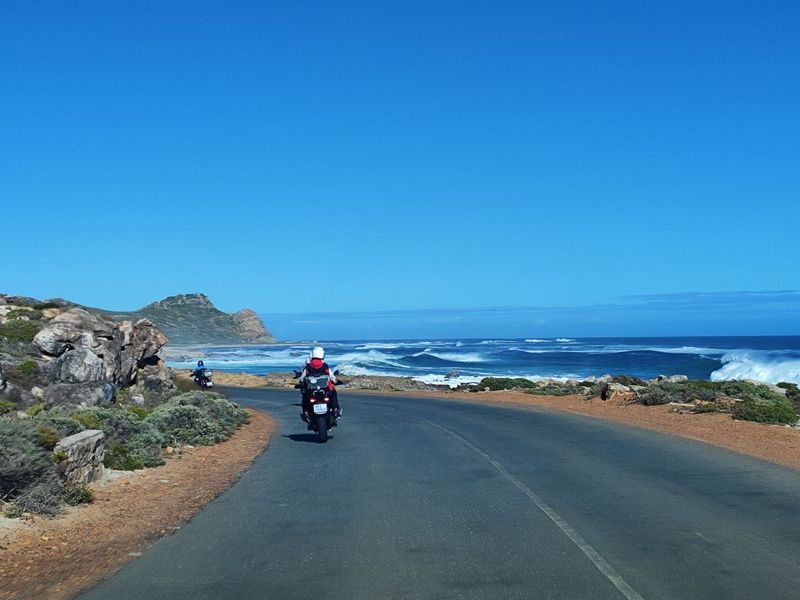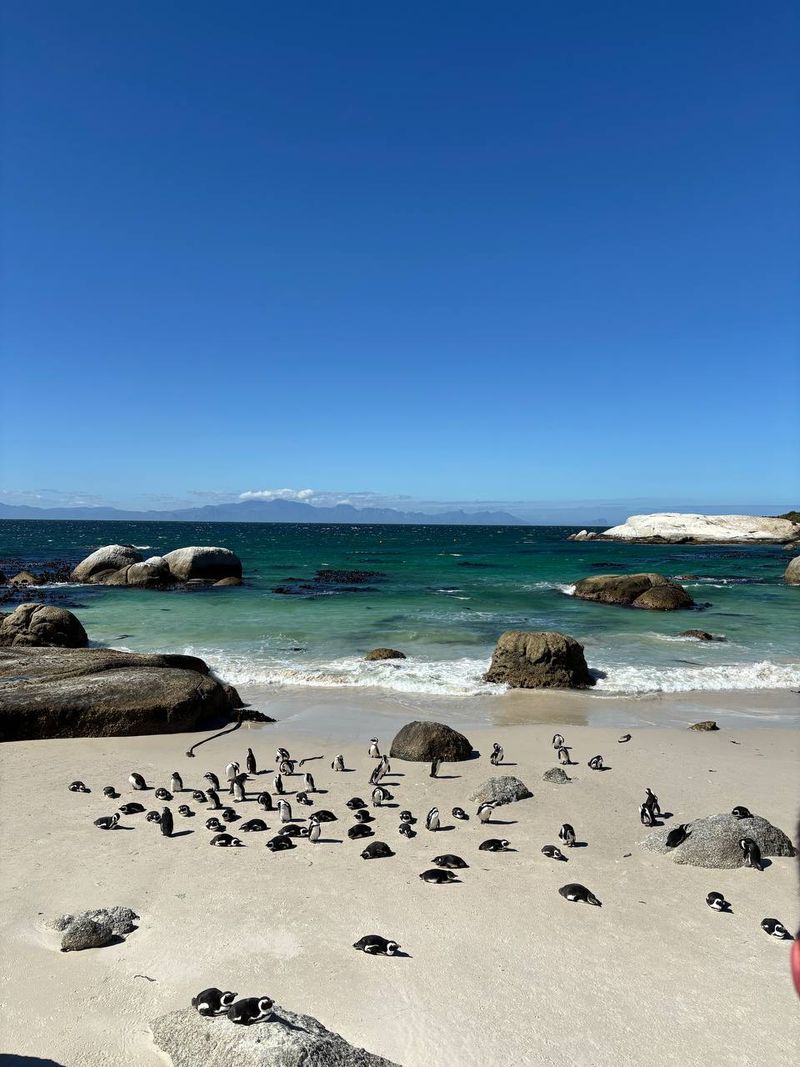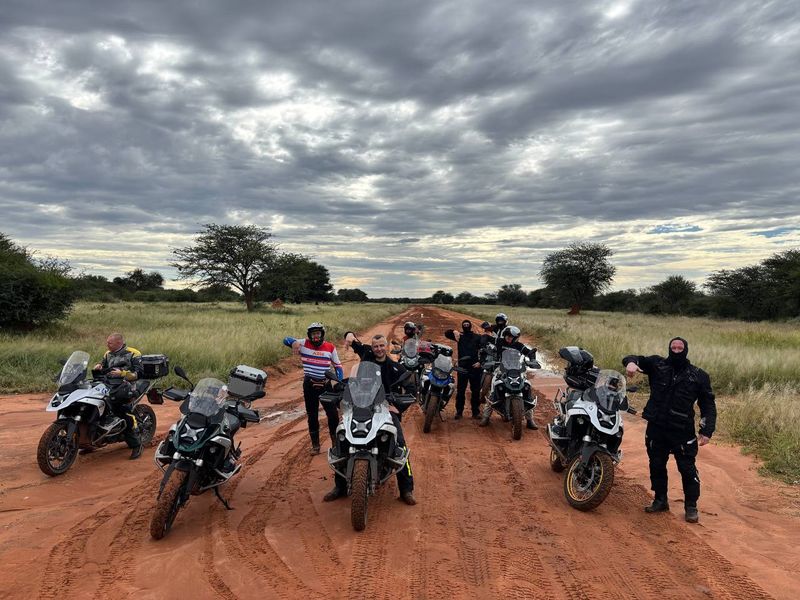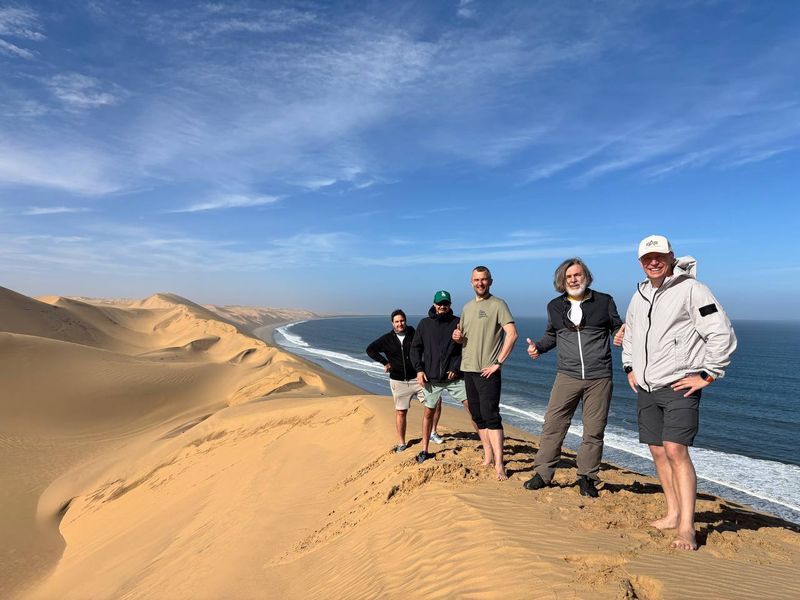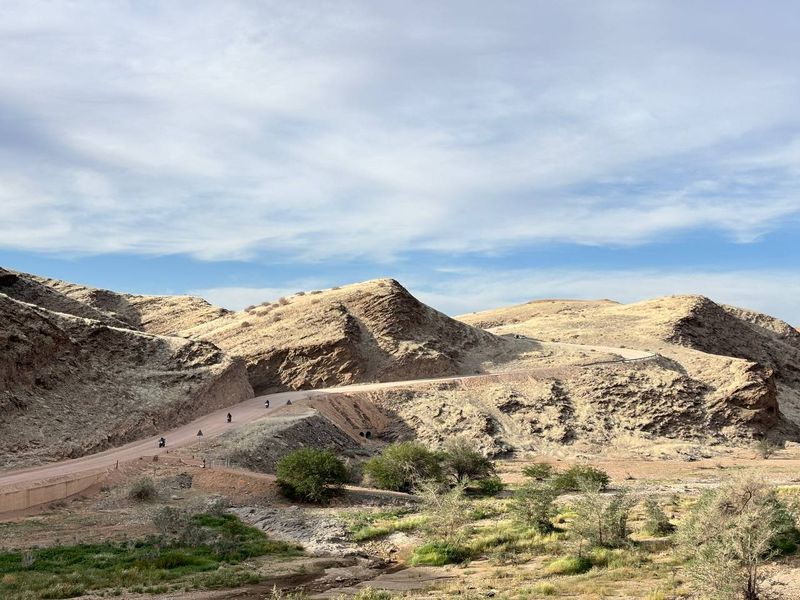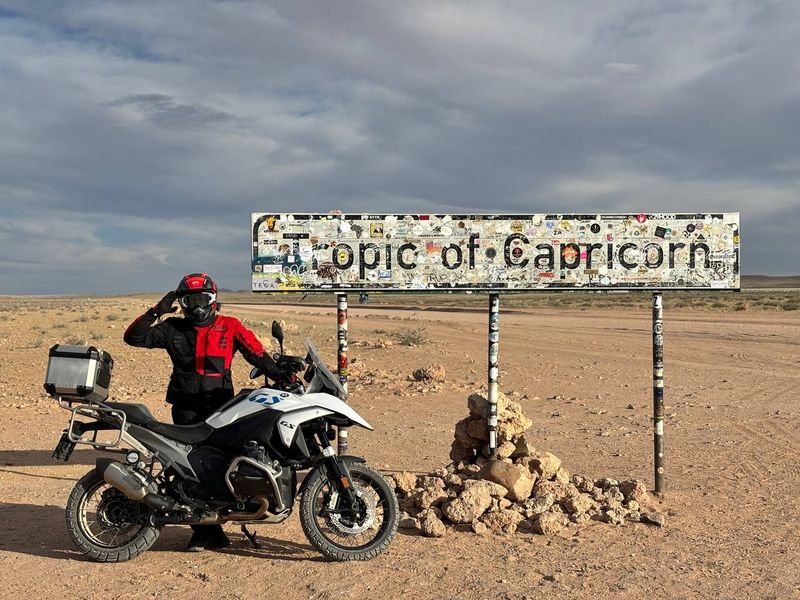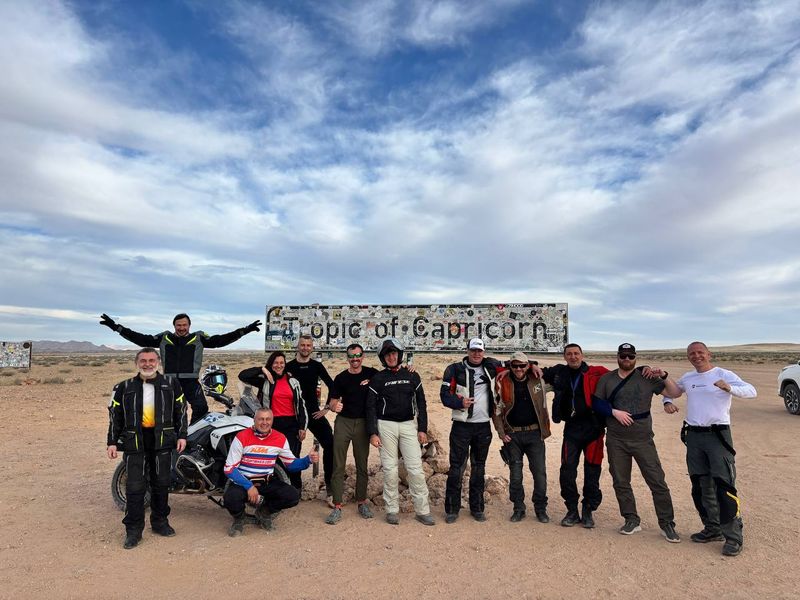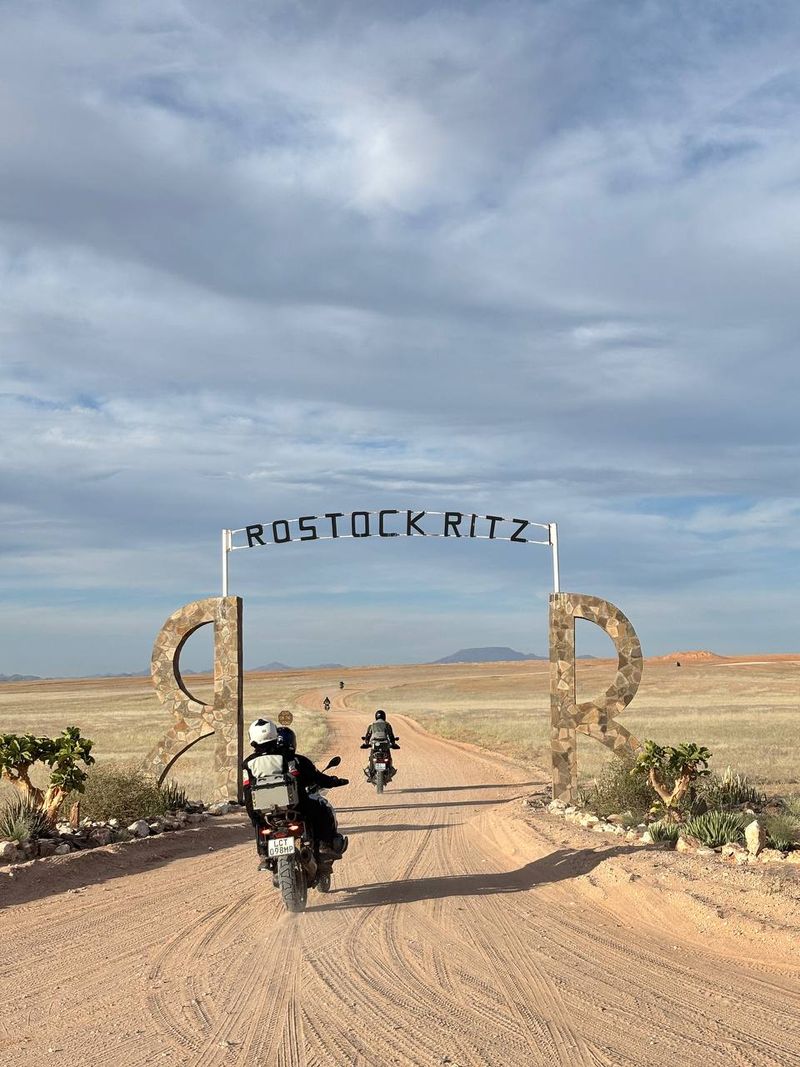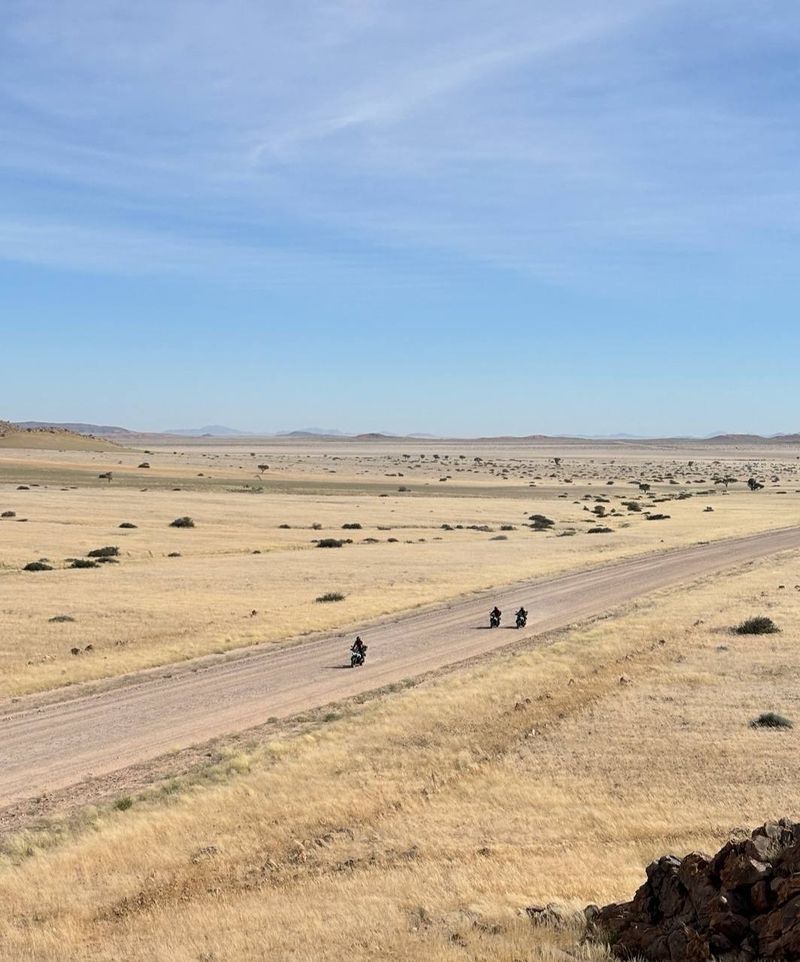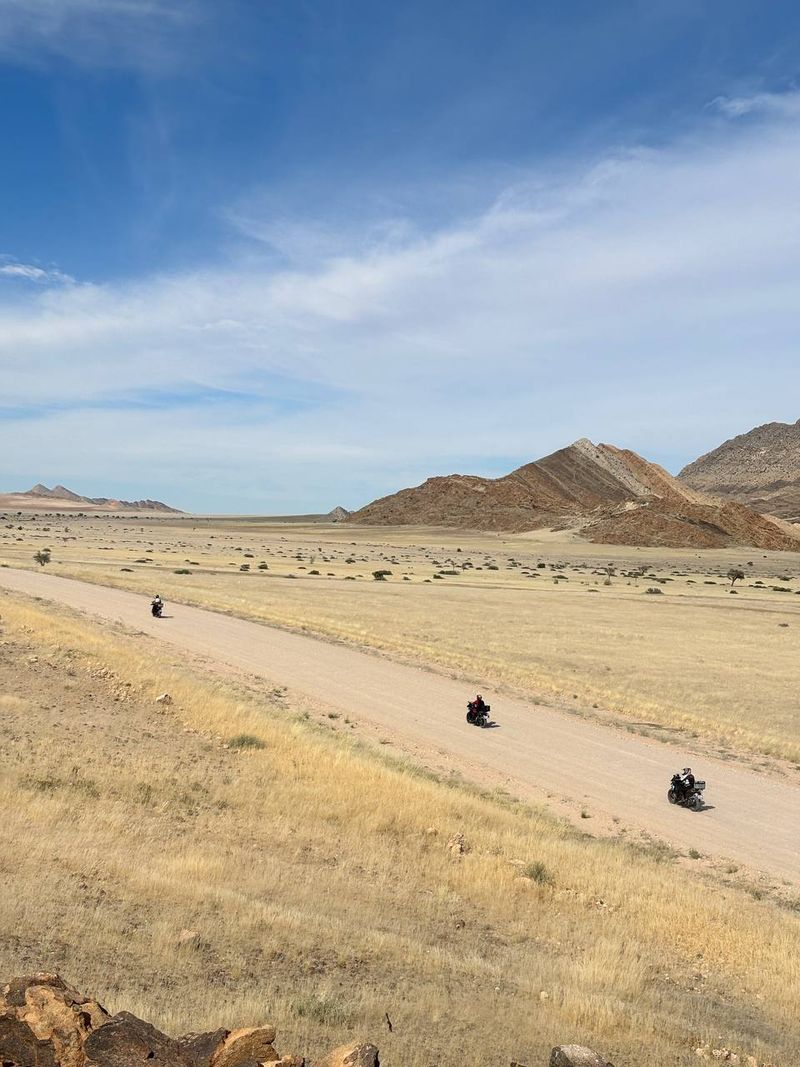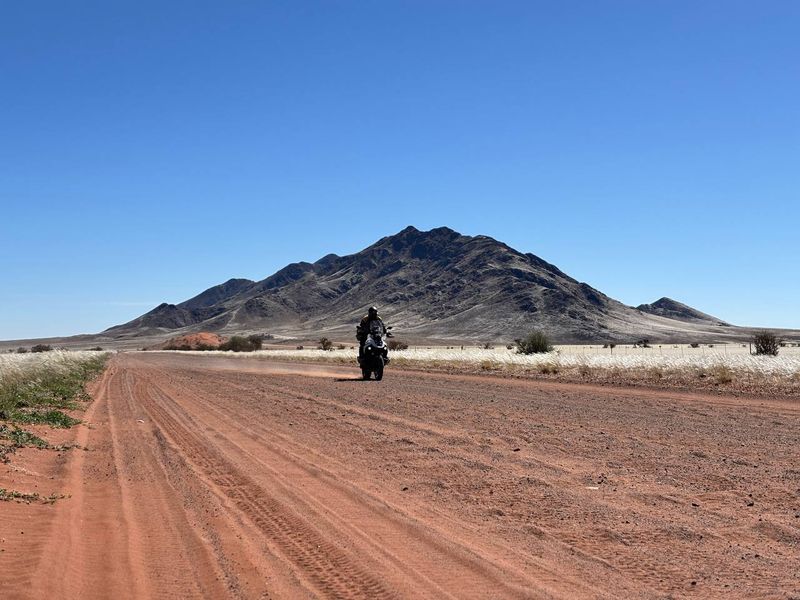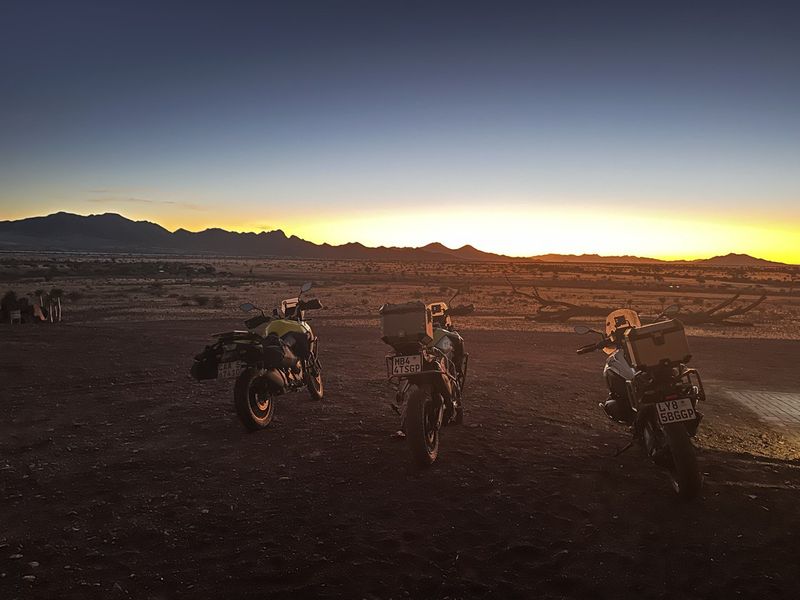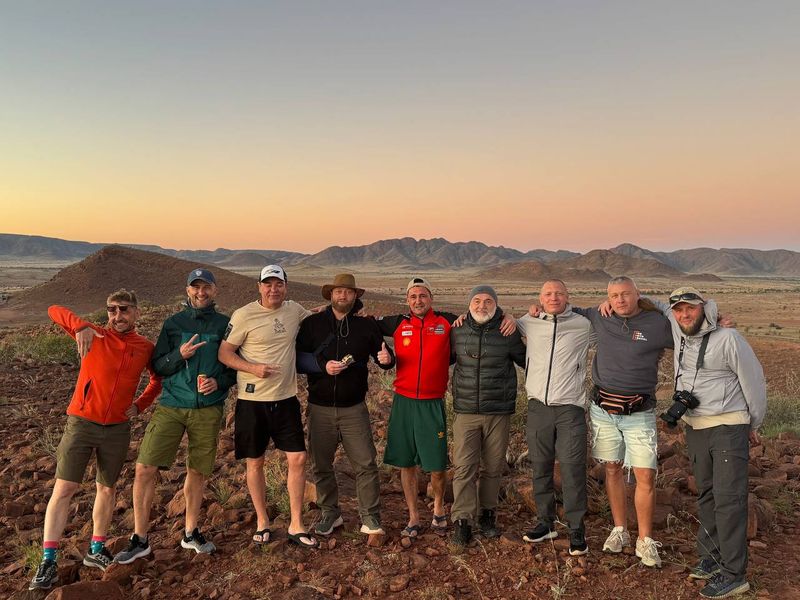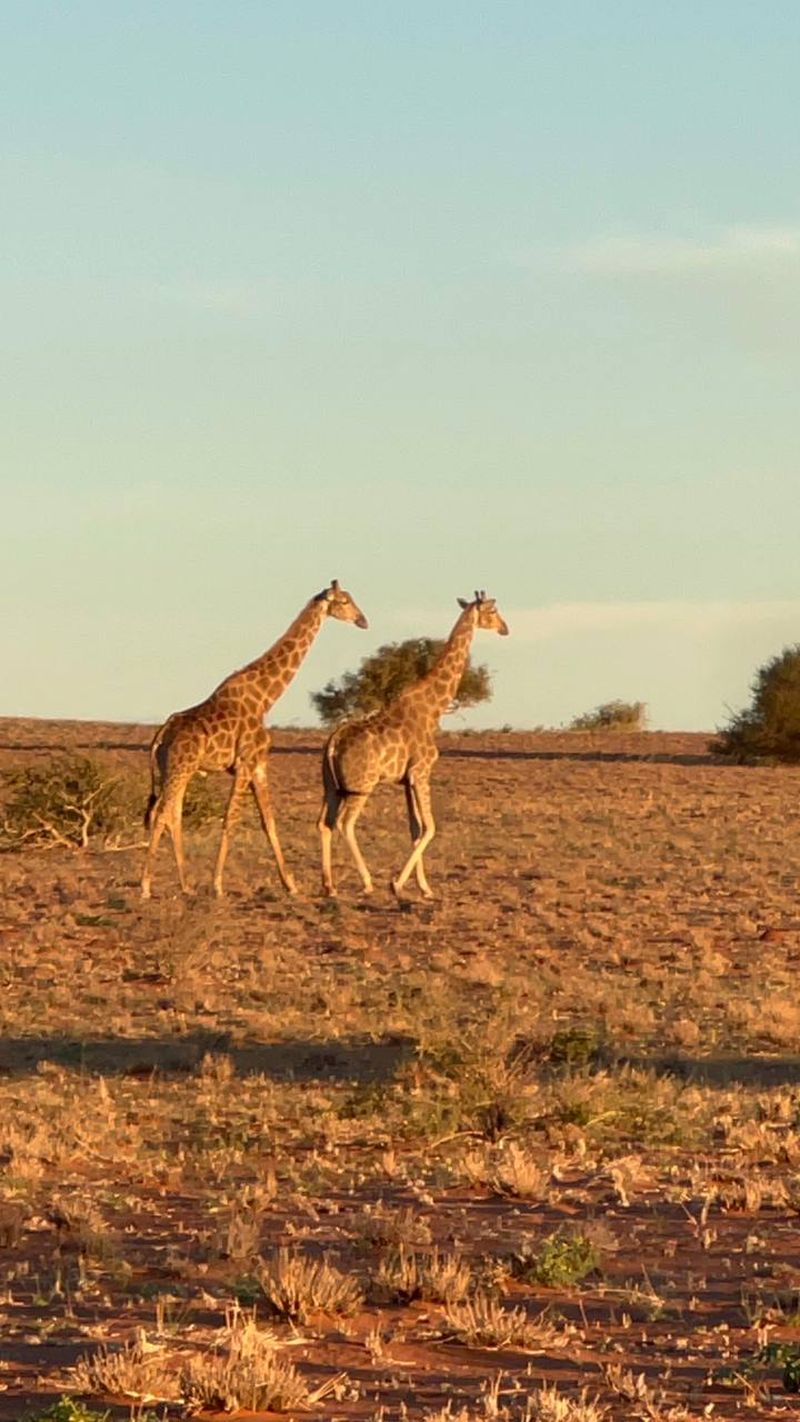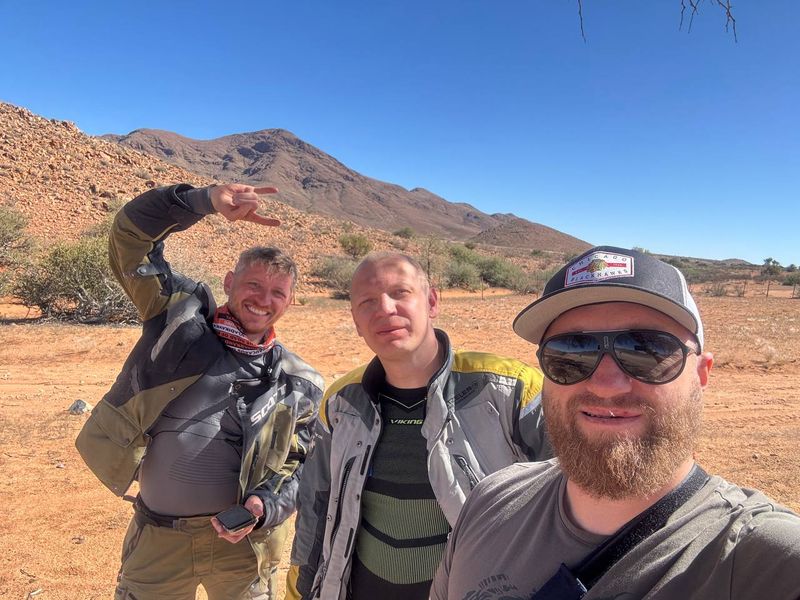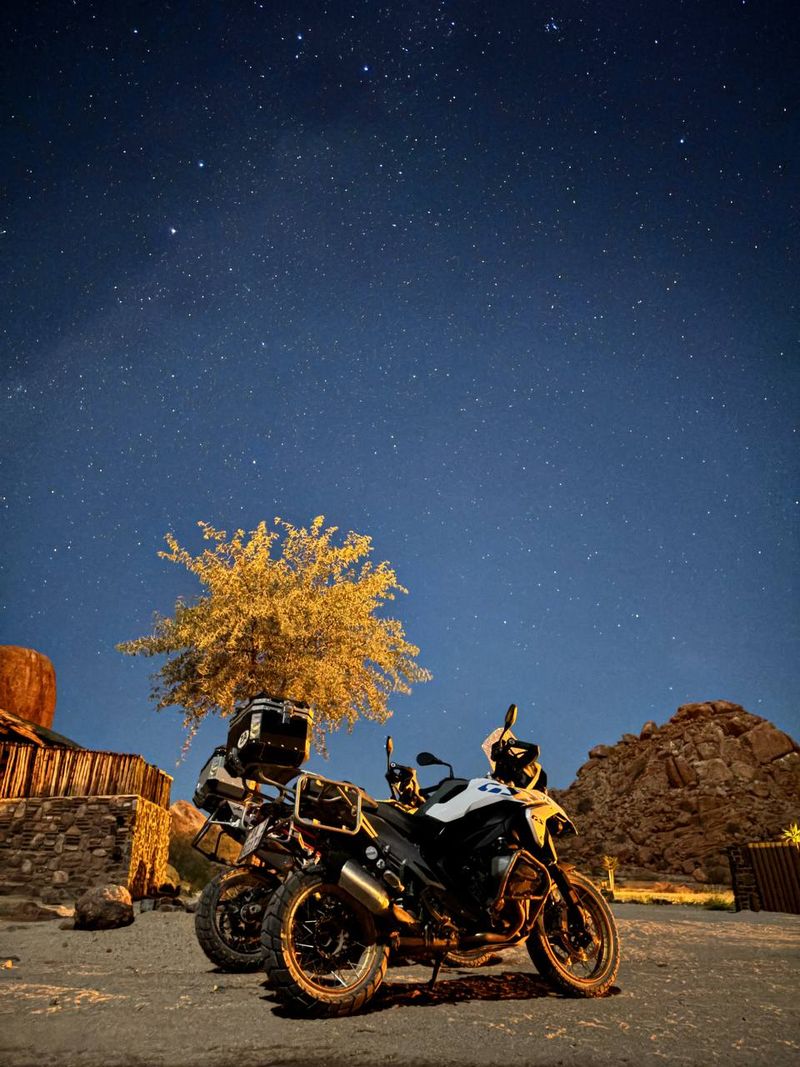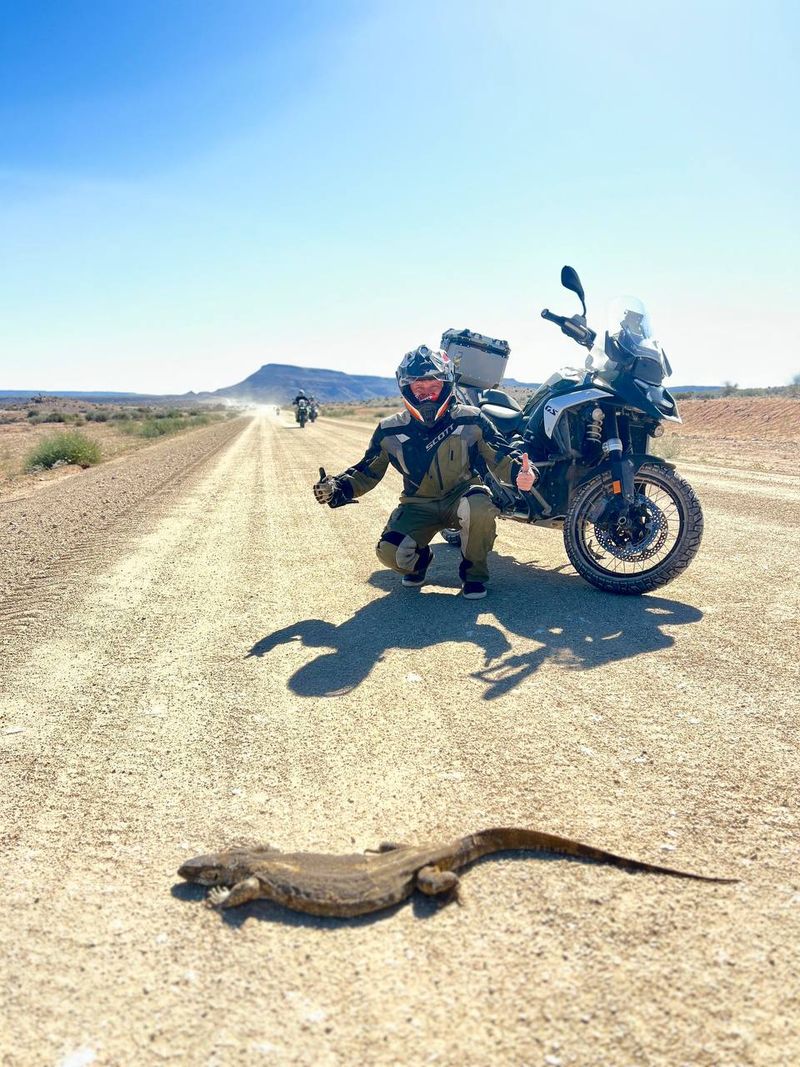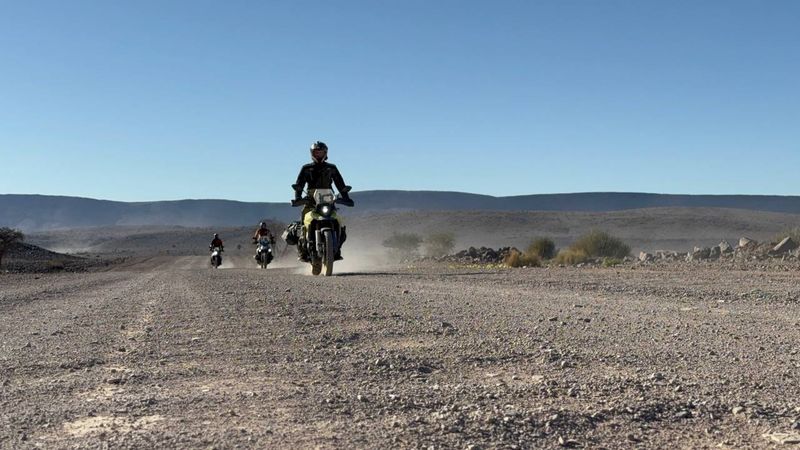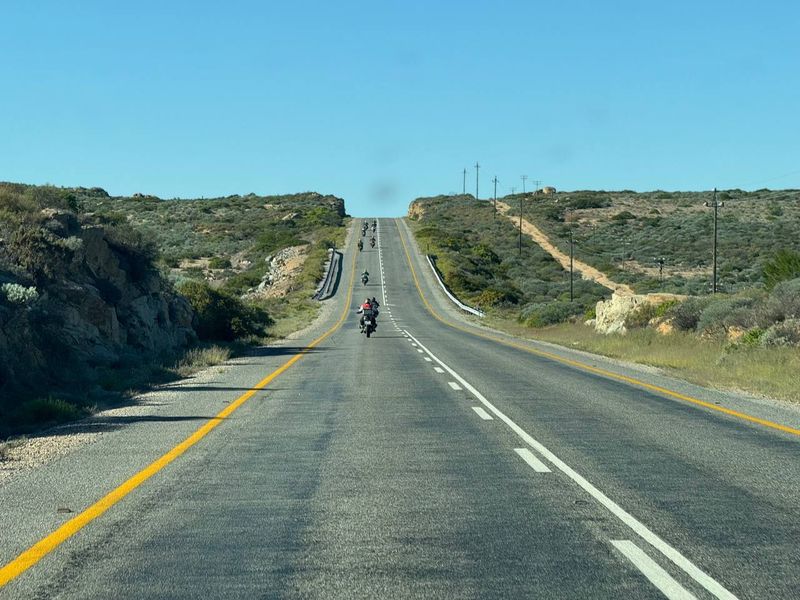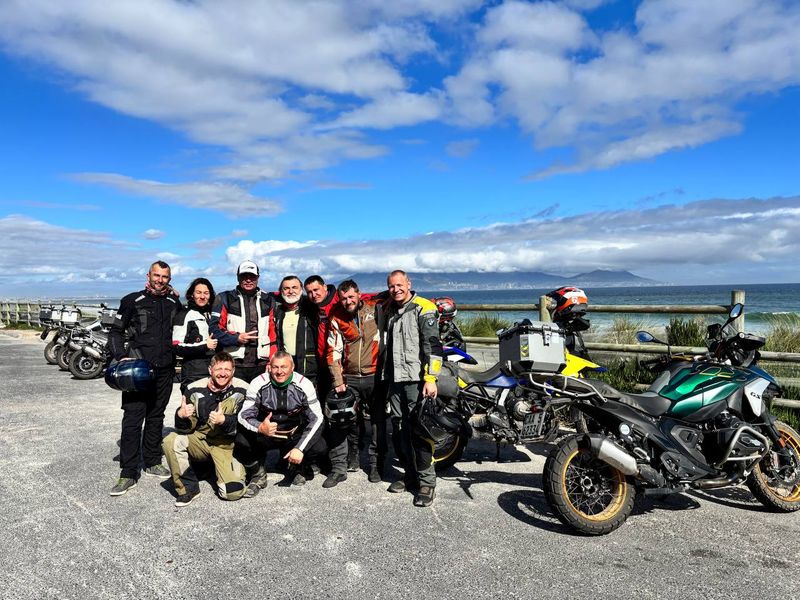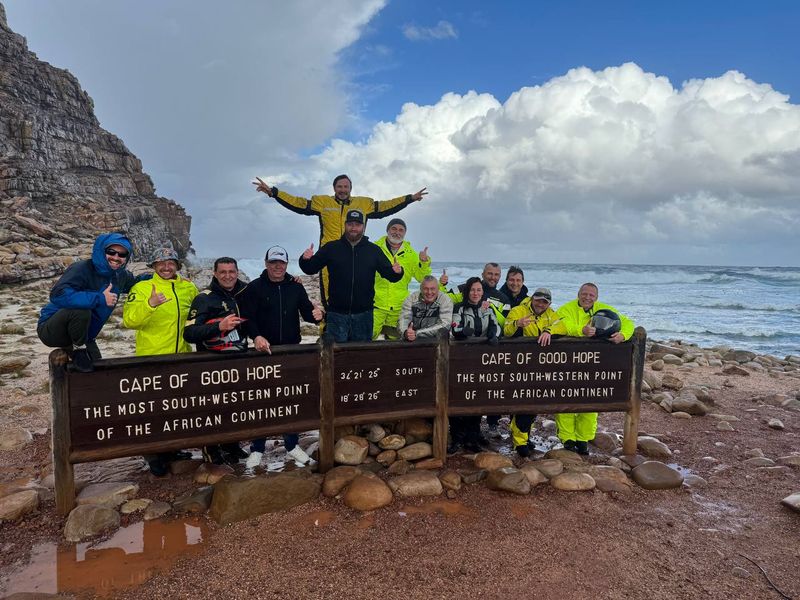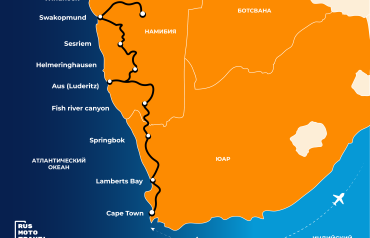South Africa and Namibia, 14 day Motorcycle Tour with BMW R1300GS
Motorcycle trip to South Africa and Namibia. We’ll visit the Cape of Good Hope and look at African penguins, visit the Fish River Canyon, the second largest in the world after the Grand Canyon in the USA, national parks, deserts and many beautiful roads await you.
Motorcycle trip around South Africa and Namibia on the new BMW F800GS (instead of 750GS), F900GS (instead of F850GS) and R1300GS (instead of R1250GS).
One-way tour, we ride South Africa – Namibia first group and second group back, from Windhoek, the capital of Namibia to Cape Town.
- Dates: upon request
- Duration: 14 days
- Total Distance: 3200 km
- Difficulty Level: Middle
- Road Conditions: 70% asphalt / 30% gravel roads, sometimes sand sections
- Price with BMW F800GS – 7 950 EUR
- Price with BMW F900GS rent – 8 450 EUR
- Price with BMW R1300GS – 8 950 EUR
- Single Room Supplement – 1 000 EUR
- Passenger Price – 3 500 EUR
- Deposit for the motorcycle 2 000 EUR
Included in the tour price:
- Accommodation in 3-4* hotels (twin rooms)
- Motorcycle rental
- Breakfasts
- Leading guide on a motorcycle
- Support vehicle
- Excursions
- Technical support
Not Included:
- Lunches and dinners
- Fuel (approx 300 Euro)
- Medical insurance
- Other personal expenses
Route:
Cape Town – Lamberts Bay – Springbok – Fish river canyon – Luderitz – Helmeringhausen – Sesriem – Swakopmund – Windhoek
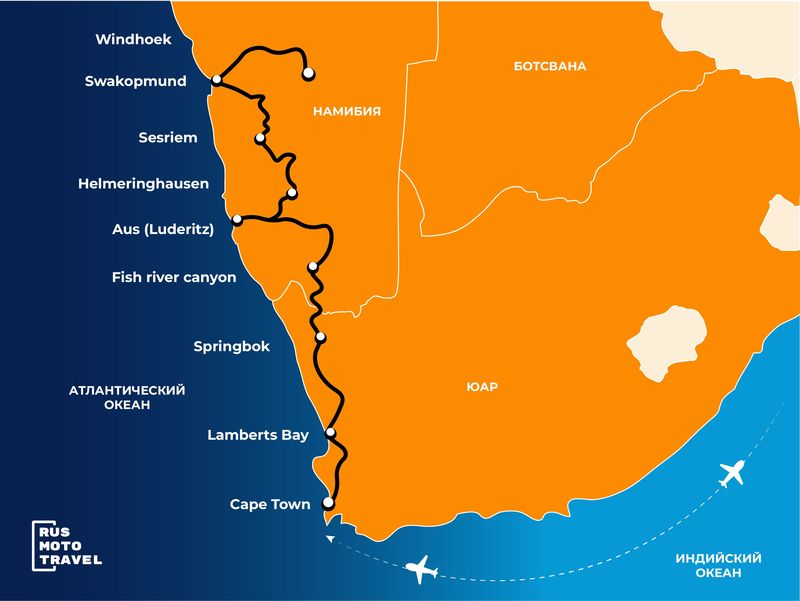
Day 1. Cape town, arrival
Arrival and transfer from the airport. In the evening meeting with the guides and discussing the upcoming trip.
Day 2. Cape Town – Cape point – Cape town, 200 km
Today we ride to the Cape of Good Hope. We will take a winding mountain road along the Atlantic Ocean to the southernmost point of the Cape Peninsula. We will also make a stop at a beach inhabited by African penguins and then return back to Cape Town.
Day 3. Cape Town – Lamberts Bay, 295 km
Today we’ll ride secondary roads and part of the N7 highway through Darling and Langebaan to reach Fredenbourgh. Like many other South African towns, these are named after prominent figures in British colonial administration. Darling, for instance, is named after Sir Charles Darling, the Lieutenant-Governor of the Cape Colony in 1853.
Lamberts Bay is one of the small villages along the Western Coast, where a natural fishing harbor has gradually developed over the years. The most prized catch here is the West Coast rock lobster, also known as crayfish in South Africa. It's often called "red gold" because its shell turns bright red when cooked.
Day 4. Lamberts bay – Springbok, 395 km
In the morning, we'll start with a bit of gravel riding, followed by asphalt roads on the N7 highway, passing through towns like Garies and Kamieskroon. Springbok is the largest town in the Namaqualand region. It's 80% populated by indigenous people, which is uncommon for a town of its size in South Africa. We’ll arrive early enough at the hotel to enjoy a traditional afternoon “stiefelbier”
Day 5. Springbok – Fish river canyon, 280 km
From here, we head into Namibia, crossing the border at Violsdrift. We'll have lunch along the banks of the Orange River before our final stretch to Fish River Canyon. Today, we’ll explore the second-largest canyon in the world. Our hotel is located within the private Gondwana Reserve, just 20 km from the main viewpoint of Fish River Canyon.
Fish River Canyon, with depths reaching up to 550 meters, is the second-largest canyon globally, after the Grand Canyon in the United States. The massive gorge winds about 160 km through the Kubis Massif down to Ai-Ais.
Day 6. Fish river canyon – Luderitz, 430 km
We continue along gravel roads, heading north along the eastern side of the canyon. Lüderitz was named after the man who began German colonization in Africa. Luderitz is now a thriving export hub for crayfish. These tasty crustaceans inhabit the marine reefs at depths of 9 to 20 meters. Due to environmental protection efforts, only crayfish longer than 65 mm are caught and sold.
Day 7. Luderitz, rest day
Today we will go on a boat trip, sail in search of penguins and pink flamingos. The rest of the day we will simply relax on the ocean shore or take a walk around the cozy town.
Day 8. Luderitz – Helmeringhausen, 290 km
In the morning, we’ll visit the ghost town of Kolmanskop. The diamond rush led to the town’s rapid rise and equally swift abandonment. In the afternoon, we’ll leave the asphalt behind as we take gravel roads for the last 100 km to the Helmeringhausen farm.
Day 9. Helmeringhausen – Sesriem, 245 km
Today, we continue north, following the western side of the Namib Desert, with the central plateau to our right. This untouched, vast landscape seems to stretch endlessly into the horizon.
We need to arrive at Sossusvlei Lodge by early evening to wash off the Namibia dust, switch to jeeps, and head out to the Sossusvlei dunes at sunset. These towering dunes are among the most majestic on Earth.
Day 10. Sesriem – Swakopmund, 350 km
We’ll stay true to gravel roads, which are more common in Namibia than in South Africa. On the way, we’ll stop in Solitaire—a quirky hamlet adorned with vintage cars.
Swakopmund, a seaside town known as Namibia’s Riviera, feels more German than Germany itself, with its characteristic architecture and culinary delights.
Day 11. Swakopmund, rest day
Today we will look at fur seals and pelicans. More tireless can go on a safari to the nearby Skeleton Coast.
Day 12. Swakopmund – Okonjima 443 km
Today we have a long way, so we leave early. We ride to the Okonjima private reserve, where lion cubs, leopards and cheetahs are rescued and then released in this place. Local residents began to exterminate large cats en masse because they preyed on livestock. Then the organization AfriCat was created, which cares about the conservation of cheetahs, leopards, lions, caracals, wild dogs and hyenas. We will go on a safari either in the evening upon arrival or in the morning of the next day.
Day 13. Okonjima – Windhoek, 220 km
Today is our final riding day. Our destination is the capital of Namibia - Windhoek. The name "Windhoek" comes from the local Afrikaans language and means "windy corner". Here we return our motorcycles and celebrate the end of our colorful trip.
Day 14. Windhoek, departure

